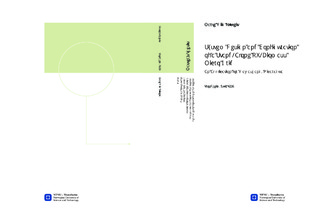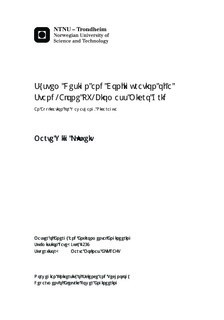| dc.description.abstract | In this thesis, an evaluation of a stand-alone hybrid micro grid for the Wawashang Complex is presented. A solution for a new electricity supply and distribution system for the complex is proposed with a focus on optimal configuration of the system. A field trip to Wawashang was conducted in April 2014 in order to collect data regarding biomass potential for electricity production and information for a possible distribution system design. The demand to be covered is divided into two systems; the micro grid, which denotes all buildings excluding the carpentry workshop and is the system for which the distribution system is designed, and the carpentry workshop. A single-phase/three-wire (split-phase) solution is suggested for the distribution system configuration, presenting the advantage of considerably smaller conductor size requirements than single-phase/two-wire systems for the same voltage drop and power loss. The total power loss of the distribution system is 896 kWh/year or 2.4 % of the demand. The production system for the micro grid consists of a PV array and a battery bank, and for the carpentry workshop a diesel generator. Additionally, a biomass based generator is available for both systems according to a defined schedule. The simulation software HOMER is used to run simulations for the two systems simultaneously, with the intention of obtaining optimal operation of the biomass generator. Two cases are evaluated on both technical and economical aspects. In Case I, the high frequency AC power output from the biomass generator is rectified to DC power and then connected to the single-phase AC bus of the micro grid through a DC-AC converter and similarly to the three-phase AC loads of the carpentry workshop. In Case II, the output from the biomass generator is connected to the DC bus of the micro grid after rectification. The simulation results shows that the optimal solution in both cases is to operate the biomass generator as much as possible in the carpentry workshop with the diesel generator available to cover peak loads. In Case I, the biomass generator is operated with a load following strategy, while in Case II a cycle charging strategy is applied, resulting in a higher exploitation of the available biomass resource in the latter. Both cases present advantages and disadvantages and are similar in reliability and cost. Case II is evaluated as the optimal solution for the Wawashang Complex, as it is the overall least expensive, most reliable and least unbalanced system when it comes to seasonal variations. The system consists of a 9 kW converter, a PV array with a global power of 30 kWp, producing a total of 37 254 kWh/year and a battery bank with a nominal capacity of 294 kWh (for the micro grid), a 15 kW biomass generator producing a total of 38 477 kWh/year divided between the micro grid (19.4 %) and the carpentry workshop (80.6 %) and a 15 kW diesel generator producing 5 400 kWh/year for the carpentry workshop. Total excess electricity is 6.3 % and unmet load is 0.21 %. Total NPC is US$ 311 224 and levelized COE is US$ 0.285/kWh. | nb_NO |

